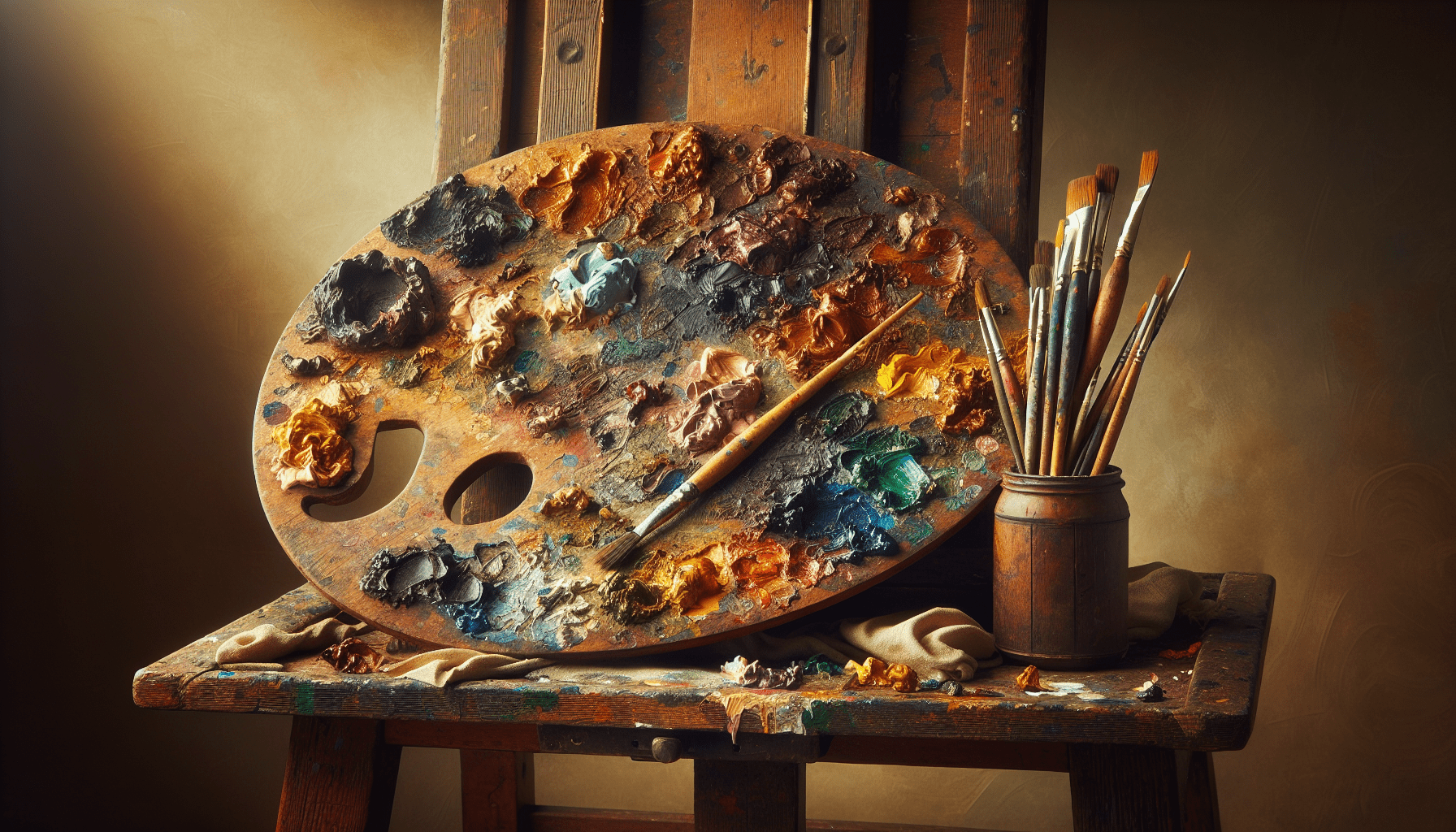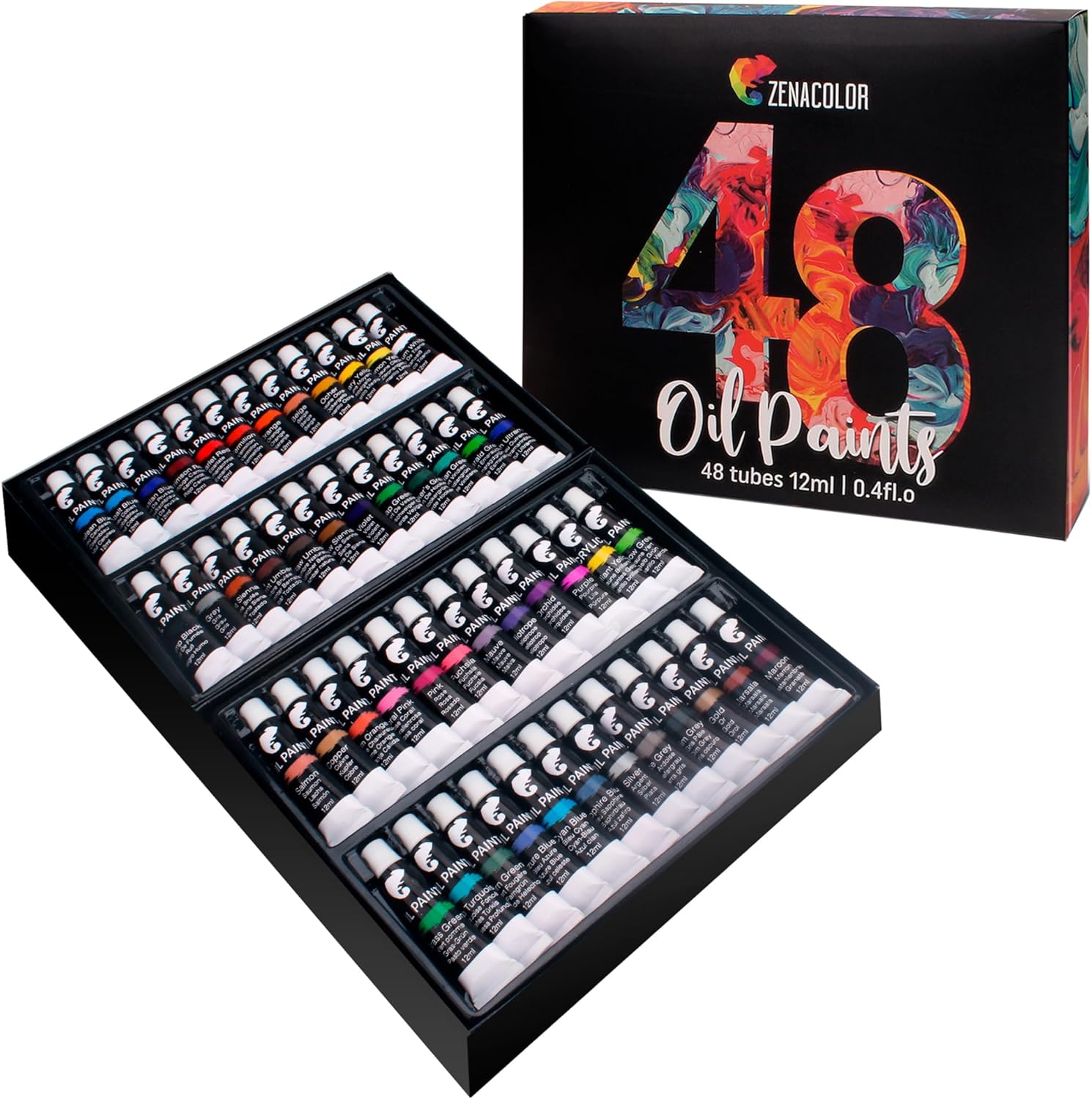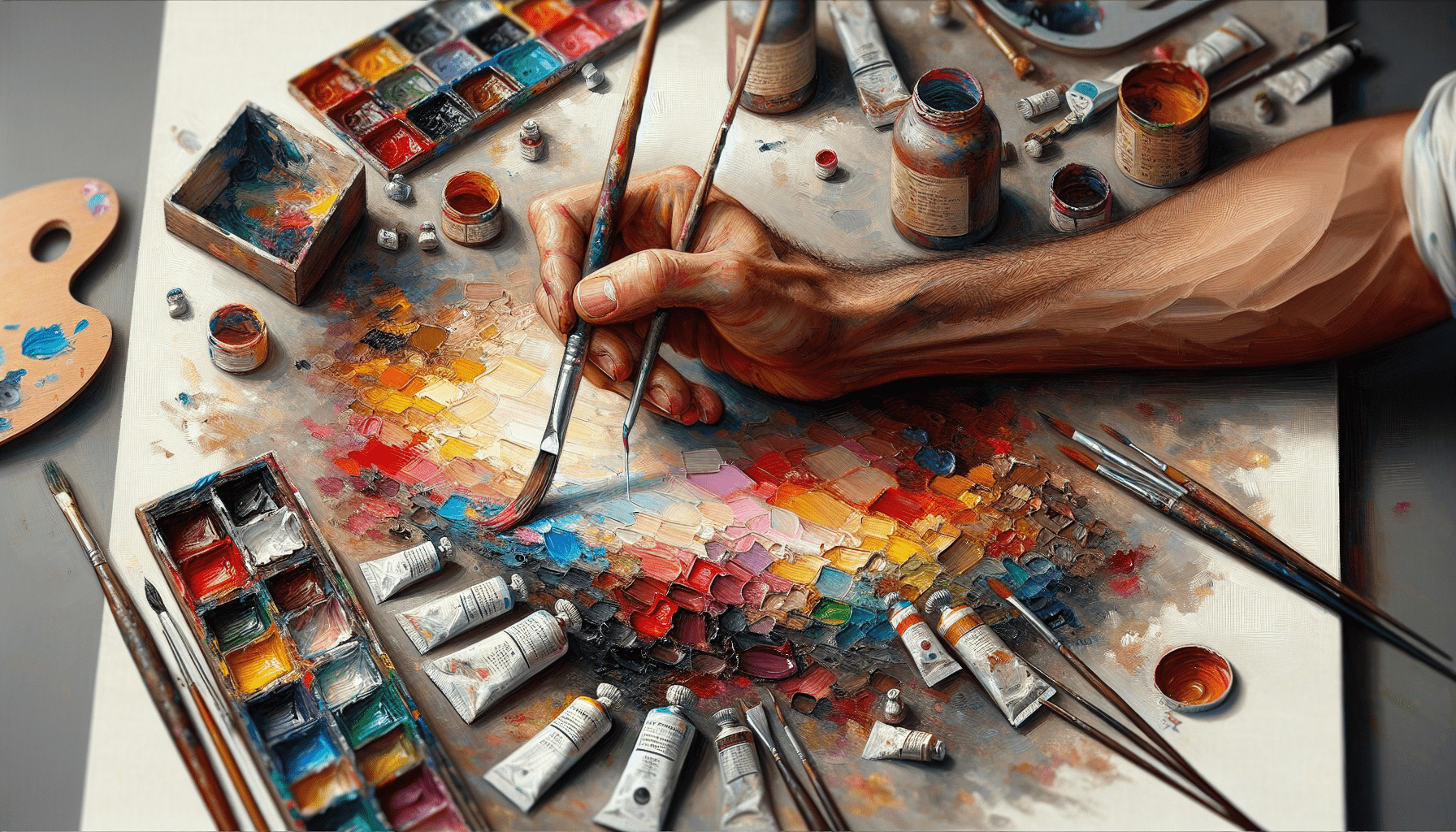Who Was An Early Master Of Oil Painting” delves into the profound impact of early oil painters on the art world. The article highlights the techniques and innovations introduced by pioneers in this medium, focusing primarily on Jan van Eyck, whose meticulous attention to detail and groundbreaking methods set a new standard for artists of his time and those who followed. You will gain an appreciation for how these early masters have influenced the trajectory of Western art, establishing foundational techniques that continue to inspire modern creators. Have you ever wondered who was an early master of oil painting? This question leads us to explore the rich and intricate history of a revolutionary art form that has shaped the visual arts landscape for centuries. Understanding the pioneers of oil painting not only allows you to appreciate the art itself but also offers a lens through which to view artistic evolution over time.
Introduction to Oil Painting
The Emergence of Oil Paint
Oil painting refers to the process of creating artworks utilizing pigments bound in a drying oil, commonly linseed oil. This medium offers unique qualities such as depth of color, versatility, and longevity, making it distinct from other forms like tempera or fresco. While its exact origins are hard to pinpoint, oil painting progressively gained prominence in Western Europe during the late Middle Ages and early Renaissance periods.
Importance of Oil Paint in Art History
Oil paints offered new possibilities and freedoms for artists. With its slow drying time, oil paint allowed for corrections, glazes, and detailed work in unprecedented ways. Its ability to produce rich textures and vibrant colors added to its popularity. This medium fundamentally transformed artistic practices, enabling more detailed realism and subtlety in visual arts.
Early Masters of Oil Painting
To grasp the significance of oil painting’s early masters, let’s delve into their contributions and how they propelled the medium forward.
Jan van Eyck: A Pioneer of Oil Painting
Jan van Eyck, a Flemish painter active in the early 15th century, is often heralded as one of the foremost early masters of oil painting. He is frequently credited with either pioneering or significantly advancing the use of oil paints. His contributions cannot be overstated.
Innovations and Techniques
Van Eyck’s attention to naturalism and intricate detail broke new ground. He meticulously layered oil paints to build up vibrant colors and elaborate textures, showcasing his mastery through pieces like the “Arnolfini Portrait” and the “Ghent Altarpiece.” His use of glazing techniques and fine brushwork brought unprecedented realism to his work.
Impact on Future Generations
Van Eyck’s works inspired countless artists and laid the groundwork for subsequent developments in the Northern Renaissance. His mastery established a new standard of excellence and potential for oil painting, demonstrating its capacity for lifelike representation.
Rogier van der Weyden: Building on Foundations
Rogier van der Weyden, another Flemish master, was profoundly influenced by Jan van Eyck. His work further advanced the medium by focusing on conveying emotion and spirituality through detailed, realistic compositions.
Techniques and Contributions
Van der Weyden was known for his expressive use of oil paints. He often depicted religious themes with rich emotional tones, as seen in “The Descent from the Cross.” His ability to capture human emotion set his work apart and influenced the portraiture tradition in oil painting.
Legacy and Influence
The detailed realism and emotional depth in Rogier van der Weyden’s work greatly influenced contemporaries and future artists. His contributions helped solidify oil paint as a serious medium for capturing the human experience.
Antonello da Messina: Bridging Two Traditions
Antonello da Messina, an Italian painter from Sicily, played a crucial role in merging the Northern European oil techniques with the Italian Renaissance style.
Techniques and Innovation
Messina was one of the first Italian artists to adopt oil painting, likely influenced by Northern European painters. His works, such as the “Saint Jerome in His Study,” employed intricate detail and a new sense of spatial coherence and lighting, combining Italian perspective and anatomy studies with Flemish fine detail.
Cross-Cultural Impact
By adopting and adapting oil painting techniques, Messina created a bridge between Northern and Southern European art traditions. His contributions helped disseminate the use of oil paint throughout Italy, influencing renowned artists like Giovanni Bellini and paving the way for the High Renaissance.
Albrecht Dürer: A Fusion of Techniques
Albrecht Dürer, a German artist, brought a blend of Northern Gothic and Renaissance influences into his oil paintings, integrating the precise detail of Van Eyck and van der Weyden with Italian perspectives.
Techniques and Achievements
Dürer’s mastery in oil painting is evident in works such as “Portrait of a Young Venetian Woman” and “The Four Apostles.” His ability to merge intricate detail with larger narrative scenes and humanistic themes marked a significant evolution in oil painting techniques.
Broader Influence
Dürer’s works disseminated new oil painting styles throughout Germany and beyond, influencing both Northern and Italian artists and contributing to the broader European Renaissance movement.
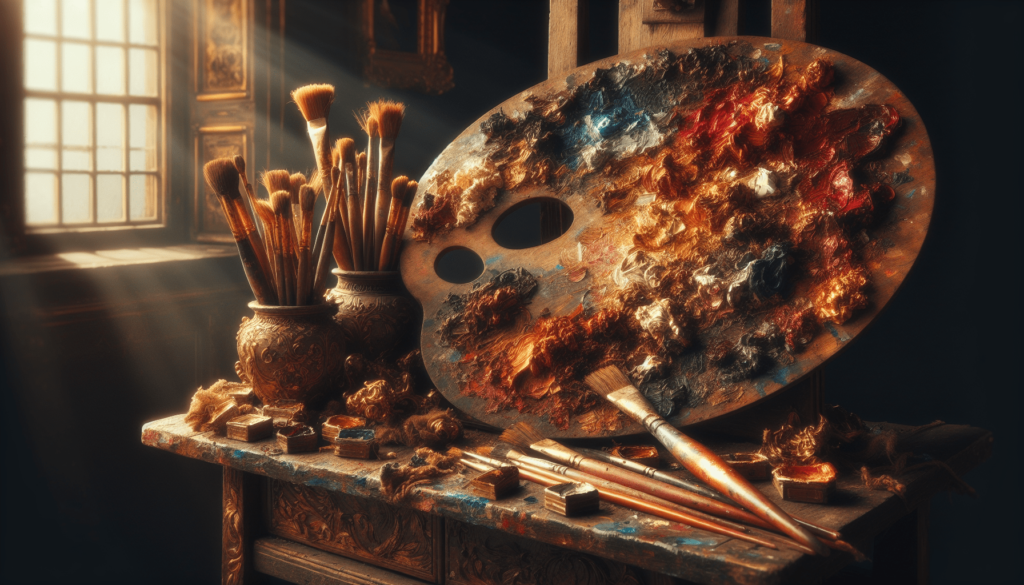
The Techniques That Defined Early Oil Painting
Understanding the specific techniques developed and refined by these masters provides deeper insight into their art.
Layering and Glazing
One of the transformative techniques in oil painting is the use of layers and glazes. By applying multiple layers of semi-transparent paint, artists achieved a depth and luminosity unattainable with other mediums. This technique allowed for subtle shifts in color and light reflection, adding complexity to the visual experience.
Attention to Detail
Oil paint’s slow drying time enabled artists to work meticulously, creating detailed and precise representations of textures and surfaces. This attention to detail is evident in the lifelike portraits and elaborate backgrounds present in works by Van Eyck and Van der Weyden.
Realism and Use of Light
Using oil paints, artists captured light and shadow in ways that enhanced realism. The ability to mix pigments and refine applications over time allowed them to simulate the effects of light on different textures and forms accurately.
Table: Core Techniques Utilized by Early Oil Painting Masters
| Technique | Description | Examples in Art |
|---|---|---|
| Layering and Glazing | Multiple layers of semi-transparent paint to create depth and luminosity | Ghent Altarpiece (Jan van Eyck) |
| Attention to Detail | Intricate and precise representation of surfaces and textures | The Descent from the Cross (Rogier van der Weyden) |
| Realism and Light | Accurate simulation of light effects on various textures and forms | Portrait of a Young Venetian Woman (Albrecht Dürer) |
Cultural and Historical Context
Northern Renaissance and Oil Painting
The Northern Renaissance, spanning the 15th and 16th centuries, saw significant advancements in art, driven partly by the adoption and perfection of oil painting techniques.
Societal Influences
The burgeoning mercantile economy and urbanization in Northern Europe created new patrons for the arts, from wealthy merchants to regional princes. These patrons desired detailed and realistic artworks to decorate their homes and public spaces, leading to increased demand for oil paintings.
Religious and Secular Themes
Early oil paintings often depicted religious themes, commissioned by churches and wealthy patrons for devotional purposes. Over time, secular themes such as portraits and landscapes also became prevalent. This shift reflected broader societal changes, including the rise of humanism and individualism.
Table: Thematic Shifts in Early Oil Paintings
| Period | Dominant Themes | Examples |
|---|---|---|
| Late Middle Ages | Primarily religious themes | Ghent Altarpiece (Jan van Eyck) |
| Early Renaissance | Blend of religious and secular | Arnolfini Portrait (Jan van Eyck) |
| High Renaissance & Beyond | Increasing inclusion of secular | The Four Apostles (Albrecht Dürer) |
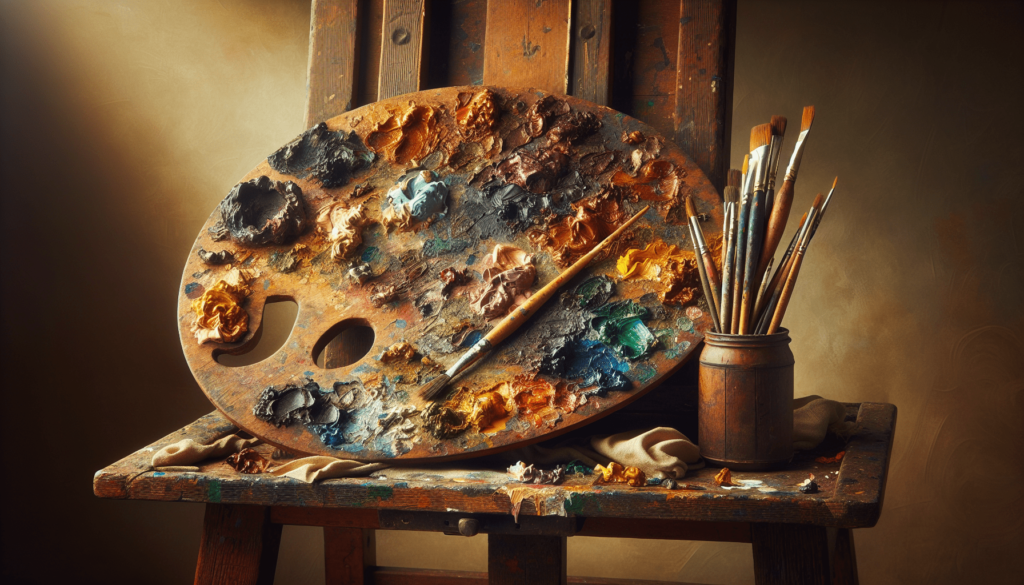
The Impact of Early Oil Painting Masters
The mastery and innovation of early oil painting pioneers had far-reaching effects.
Integration into Art Education
Techniques developed by early masters became foundational elements of art education. Understanding the layering, detail, and realism techniques of Van Eyck, Van der Weyden, and their contemporaries became crucial for aspiring artists.
Influence on Successive Art Movements
The techniques and methodologies established by early oil painting masters influenced a wide range of subsequent art movements, from the High Renaissance to Baroque, Realism, and beyond. These innovations have sustained their relevance, continuing to inspire modern artists.
Conclusion
Exploring who was an early master of oil painting reveals the enduring legacies of Jan van Eyck, Rogier van der Weyden, Antonello da Messina, and Albrecht Dürer. Their pioneering techniques, intricate details, and realistic portrayals not only transformed art in their time but also laid the foundation for countless artists and movements that followed.
These early masters displayed a profound understanding of their medium, capturing the essence of their subjects with unprecedented depth and realism. Their influence remains integral to the history of art, illustrating how innovation, technique, and cultural context intertwine to create lasting legacies.
By appreciating the works and contributions of these early oil painting masters, you gain a deeper insight into the transformative power of art and its ability to connect us across time and space.
